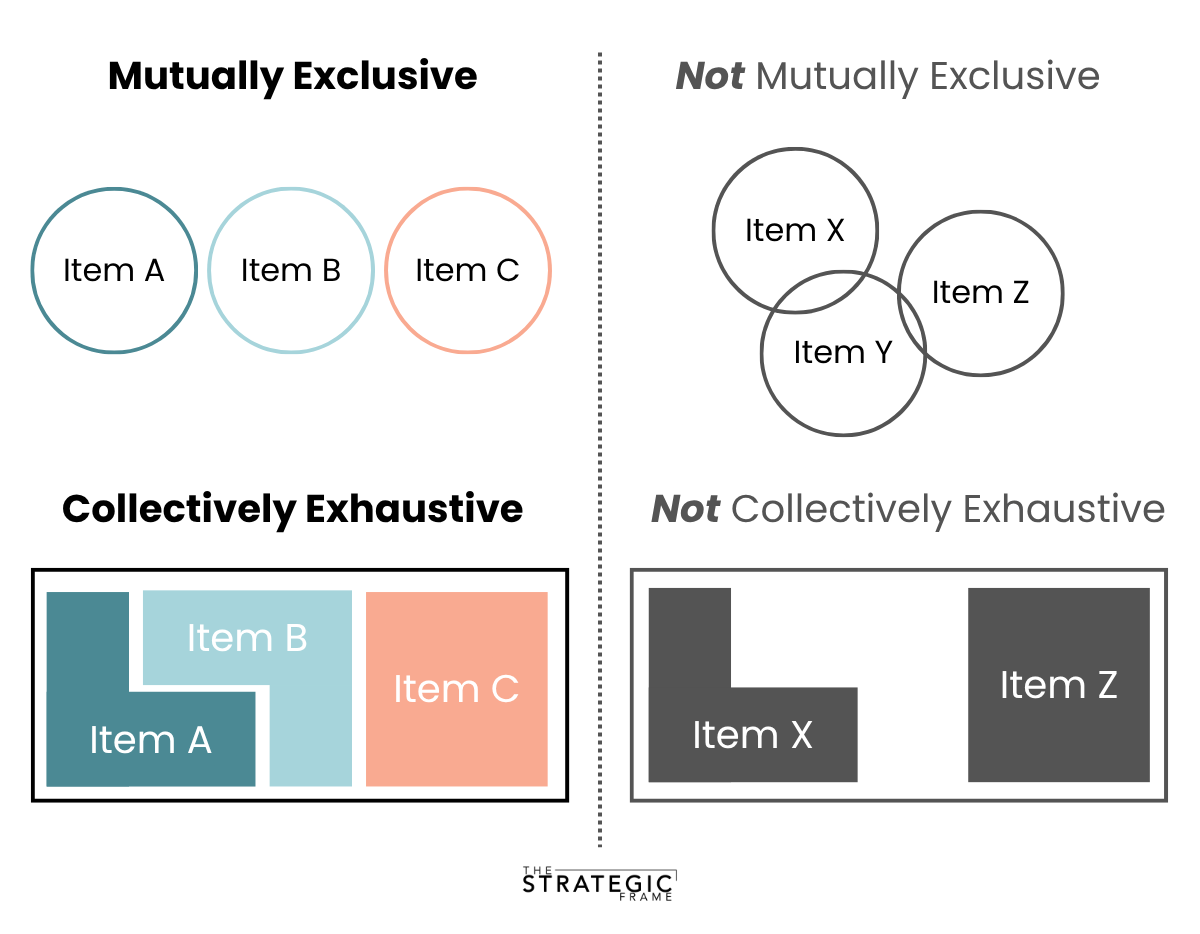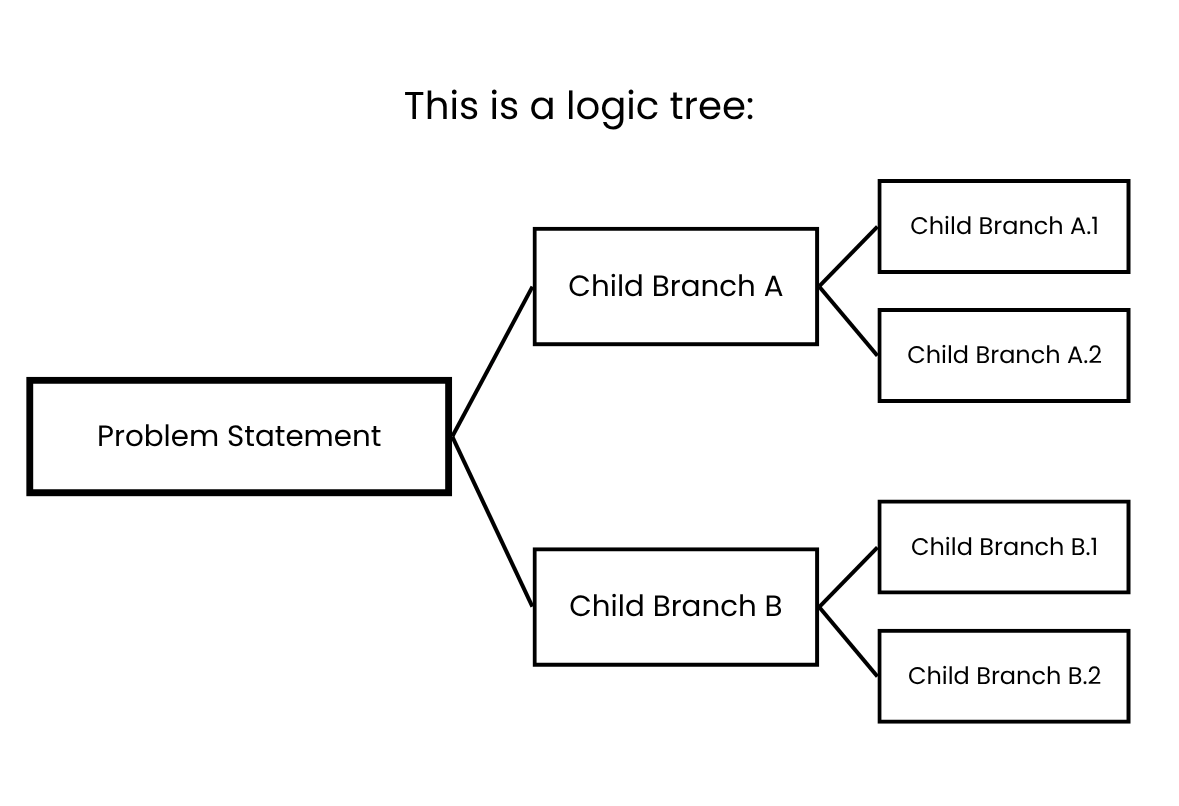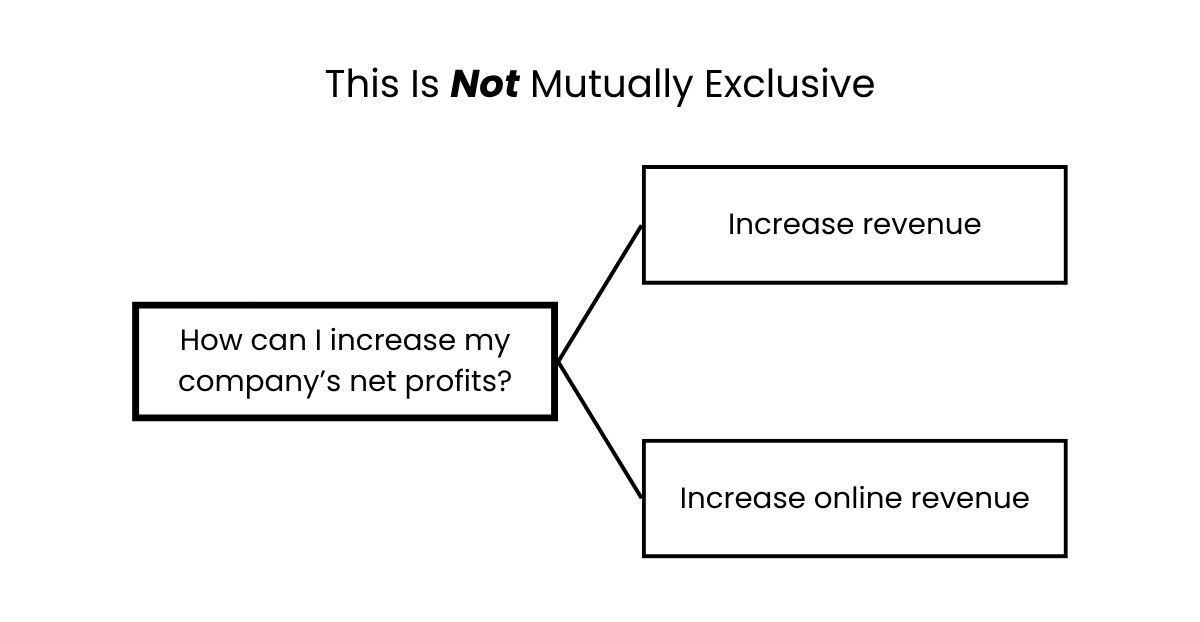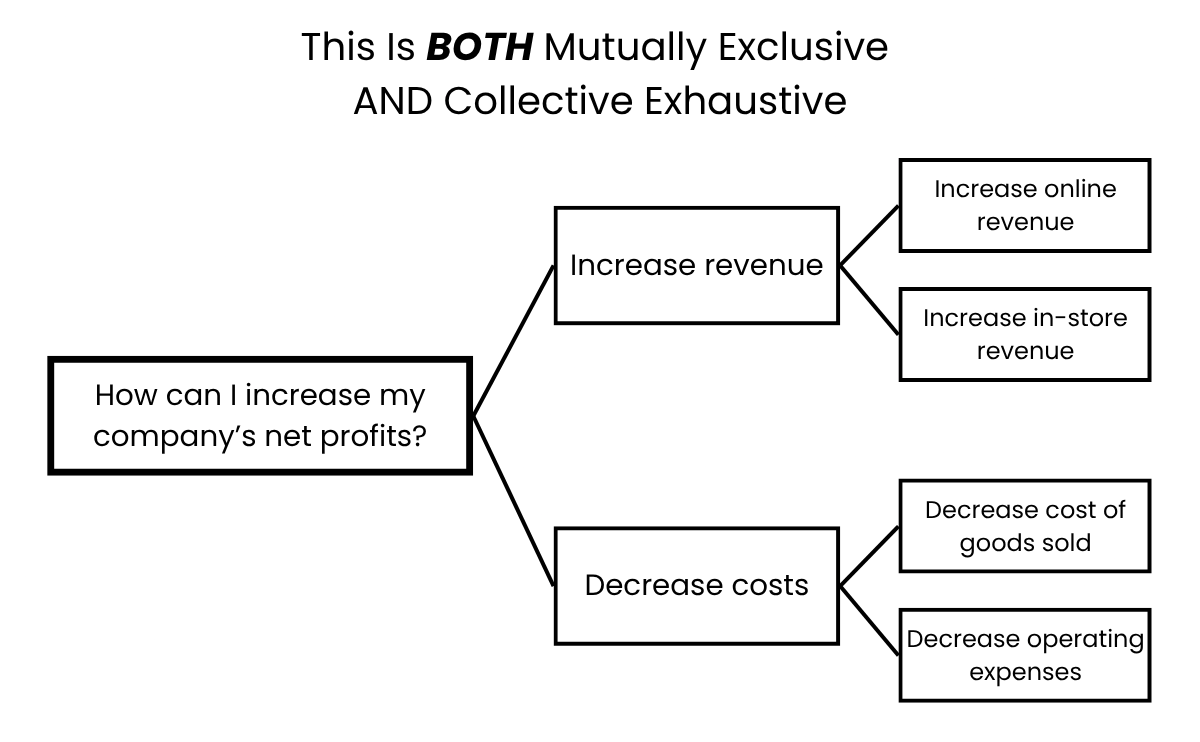MECE
The principle that forever changed how I approach problems
EXECUTIVE SUMMARY:
MECE stands for “Mutually Exclusive, Collectively Exhaustive,” and is a problem-solving framework that helps break down complex issues with clarity and structure. For a set of options, each item must be Mutually Exclusive (there’s no overlap) and Collectively Exhaustive (all possible options are present). This framework is useful to use when you have a complex problem you’re trying to solve, or you have a solution in mind and want to know how it fits into your overall goal.
It wasn’t until ten years into my career when I learned a concept that would change how I approached solving problems for the rest of my life. I learned this through McKinsey’s Management Program and then again years later when pursuing my master’s degree at Harvard University. The concept? MECE.
The MECE Methodology
MECE stands for “Mutually Exclusive, Collectively Exhaustive.” This means that for a set of options, each item must be Mutually Exclusive from each other, meaning there is no overlap, and also they must be Collectively Exhaustive, meaning that altogether they completely make up the parent branch. Nothing is missing.
Here is a graphical representation of what is and is not MECE:
A specific tool to pair the MECE concept with is Logic Trees. A Logic Tree is a graphical structure used to systematically organize information. You’ve likely seen or used them before.
Logic Trees start with a problem statement and then have children branches. Each branch may become a parent to more child branches. Note that although Logic Trees often help with decision making, I avoid using the term “Decision Tree” because that term has a specific use and meaning in machine learning.
Let’s look at some Logic Tree examples.
Here is an example of a set of branches that is not Mutually Exclusive:
There is overlap with the two branches because increasing online revenue is a subset of increasing revenue.
Now here is an example of a set of branches that is not Collectively Exhaustive:
This is not collectively exhaustive because there are more ways to increase net profits than increasing revenue.
Finally, here is an example of a set of branches that is both Mutually Exclusive AND Collectively Exhaustive.
Tips
Tip #1: When to use MECE:
Use MECE when you have a complex problem and need to know what options you have. Use this as a structured brainstorm by yourself, or with colleagues.
Use MECE when you have an idea for a solution in mind, but want to know how it ladders up to the original goal, plus explore what other opportunities exist before you commit. For example, if someone on your team really wants to run TikTok ads for your business, how does that fit into the broader set of possibilities, options, and priorities in your business? Start with a problem statement on one end, such as “How can we increase product sales on our eCommerce website?” and TikTok ads on the other. Then build in all the middle branches and expand them.
Tip #2: If you’re stuck and either don’t know how to continue or make everything fit:
Work on a different part of your Logic Tree; a break from where you are currently focusing may allow you to find a solution with fresh eyes later.
Duplicate what you have and try a different structure a couple branches up from where you are at. There is no “right” answer when it comes to Logic Trees, so reorganizing it may be beneficial.
Ask someone who is a domain expert to help you organize your tree. This may be a coworker, friend, or paid consultant. They may be able to think of options you had not otherwise considered.
Tip #3: Add numbers to your branches such as revenue breakdowns. This provides a view on what is working, what is not, and what else may be worth testing.
Tools
The best tool I’ve found for Logic Trees is Miro. Their Mind Mapping Tool has a very good user experience for creating and editing Logic Trees. Other collaborative whiteboard tools to consider include FigJam by Figma and Lucidchart.
Wrapping It All Up
So that’s MECE. Mutually Exclusive, Collectively Exhaustive.
I encourage you to try this method out to break down complex problems and to organize multiple opportunities. Send me a note on LinkedIn if you gave it a shot. Let me know what you think or if you need some help.
This email is sponsored by MySidecar
MySidecar is an AI-native marketing platform that transforms how startups, small teams, and agencies create and execute marketing strategies. MySidecar delivers structured, prescriptive AI workflows—ensuring faster execution, higher-quality content, and smarter marketing outcomes. Learn more at www.mysidecar.ai.








I loved hearing you speak about this topic Jonathan, I’d love to connect soon!